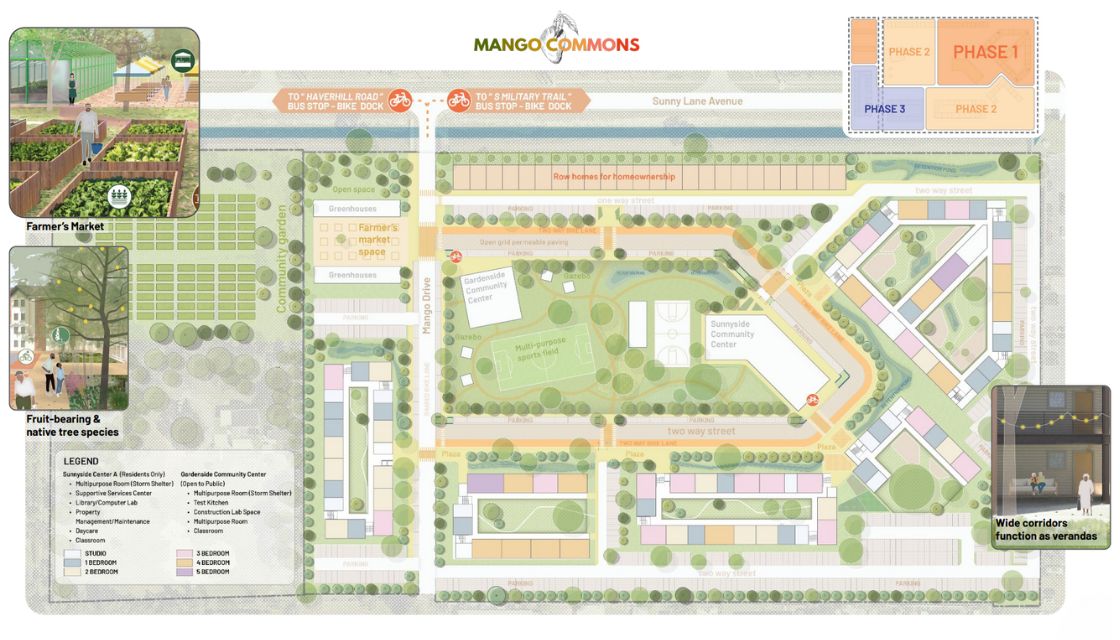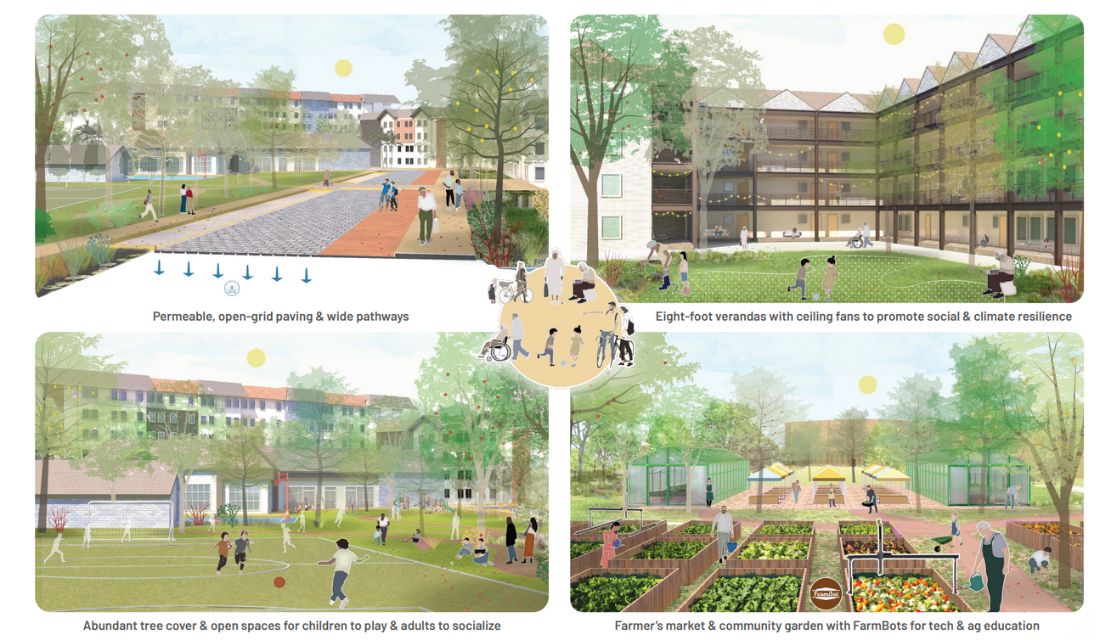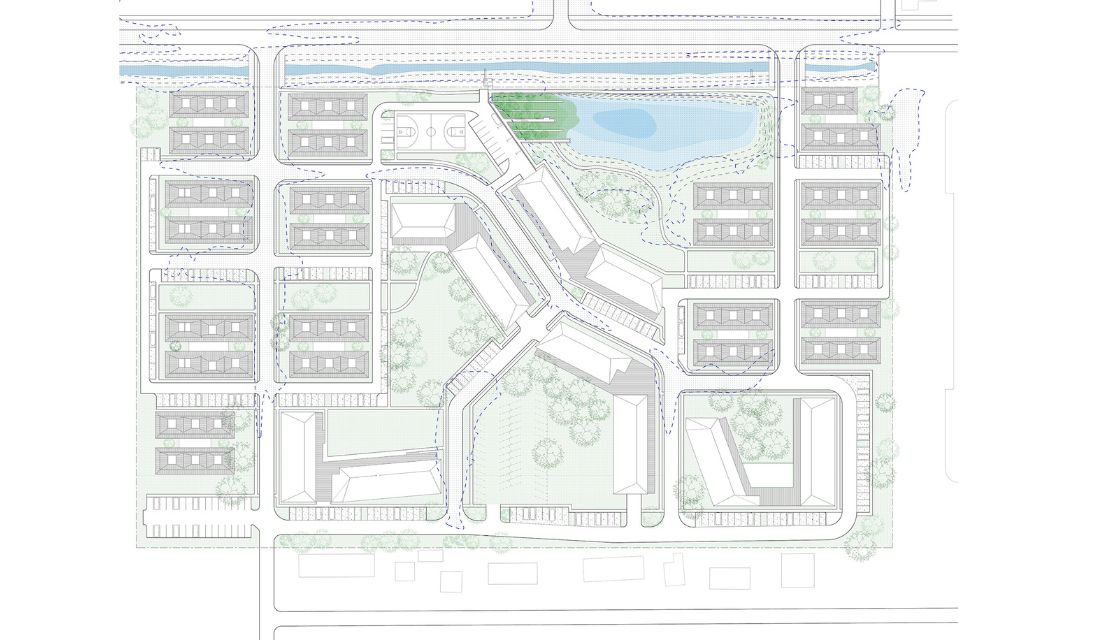Berkeley student teams place first and second in national affordable housing competition
For the first time, Berkeley came out on top in the 2025 Innovation in Affordable Housing Student Design and Planning Competition. The theme for this year’s competition, which received entries from schools across the country, was “designing for disasters.”

Congratulations to the winning Team Blue — which included College of Environmental Design students Omeed Ansari (MRED+D 2025), Yameen Arshad (MRED+D 2025), and Balaji Balaganesan (MCP 2025) — and second-place finisher Team Gold — with Kyler Blodgett (MCP 2025), Chris Frye (MRED+D 2025), Chris Hamilton (MArch 2027), and Jovan Sheshbaradaran (MCP 2025) representing CED. Teams also included students from the Goldman School of Public Policy and the Haas School of Business.
For this year’s competition, cross-disciplinary graduate student teams were challenged to address the lack of affordable housing in Palm Beach County, Florida, while also considering the dangers of heat, flooding, hurricanes and high winds, as well as post-disaster safety. Teams proposed plans to redevelop a 13-acre parcel of underutilized land owned by the county that currently is the site of a 134-unit public housing development.
Faculty advisor Lydia Tan, lecturer in the Abbey Master of Real Estate Development + Design program, says, “Competitions like this are so important for students to be able to address real-life situations and learn through doing. UC Berkeley’s Team Blue dug deep into the local issues facing the Palm Beach County Housing Authority and the community, talking with local stakeholders in an effort to truly understand the local ecosystem. The team’s ultimate proposal is realistically executable, would result in an amazing environment for current and future residents, and can act as a catalyst to bring the local community even closer together.”
Team Gold will present their winning design at CLPHA’s meeting this summer, hosted by Atlanta Housing. These projects will have a real impact: The winning team’s work will likely serve as the basis for the Palm Beach County Housing Authority’s forthcoming RFP.
THE WINNING PROJECTS
First Place — Mango Commons
By Team Blue: Omeed Ansari (MRED+D), Yameen Arshad (MRED+D), Balaji Balaganesan (MCP), Harrison Haigood (EWMBA), and Chelsea Hall (MPP)

Mango Commons is rooted in disaster resilience, long-term sustainability, and community cohesion. The 350-unit three-phased redevelopment plan for the Palm Beach County Housing Authority is innovative and resident-driven. Mango Commons makes use of built and natural systems for climate resilience, underpinned by the site’s self-sustaining circular economy. In its design, the project boasts large outdoor verandas to build social resilience and hearken to Southern “front porch” culture. Mango Commons also leverages community gardens, tech education, and culinary programming to promote food security, self-sufficiency, and intergenerational activities for the entire community. Lastly, for its financing, it incorporates a unique option-to-buy program and a partnership with Habitat for Humanity to build homes for ownership.
Second Place — Golden Palms
By Team Gold: Kyler Blodgett (MCP), Courtney Fong (MPP), Chris Frye (MRED+D), Chris Hamilton (MArch), and Jovan Sheshbaradaran (MCP)

Golden Palms is a 285-unit phased redevelopment that will support the immediate and long-term needs of Dyson Circle’s intergenerational community where established residents and newcomers can raise their families, age in place, and build strong foundations for the future. Golden Palms is rooted in three key principles: Amplifying Community Assets builds on the existing strength of the core infrastructure and resident relationships, Designing for Durability mitigates environmental disaster and maximizes energy efficiency through passive design, and Opening Doors to Opportunity boosts financial mobility, fosters early career development, and charts a pathway for first-time homeownership. Innovations include locally responsive townhomes and apartments, an adaptive opportunity center that doubles community programming with neighborhood storm-sheltering, a LIHTC-supported lease-to-own model, and the recreational and flood-mitigating Marsh Park.
